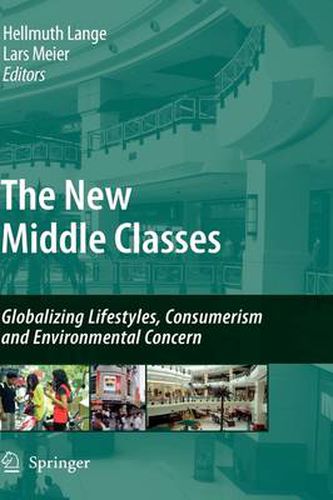Readings Newsletter
Become a Readings Member to make your shopping experience even easier.
Sign in or sign up for free!
You’re not far away from qualifying for FREE standard shipping within Australia
You’ve qualified for FREE standard shipping within Australia
The cart is loading…






This title is printed to order. This book may have been self-published. If so, we cannot guarantee the quality of the content. In the main most books will have gone through the editing process however some may not. We therefore suggest that you be aware of this before ordering this book. If in doubt check either the author or publisher’s details as we are unable to accept any returns unless they are faulty. Please contact us if you have any questions.
With respect to the developing and threshold economies, it is no longer the poor who are the only focus of media attention. Today, the new middle classes are about to take centre stage, too. With their lifestyles and attitudes, the new middle classes are considered to be both the products as well as the promoters of globalization. They are a highly heterogeneousgroup in socio-economicterms as well as in habits 1 and preferences, including their societal role as consumers and citizens. The ?rst wave of scholarly and political attention can be traced back to the mid-nineties. The focal point was surprise and unease about indubitable symptoms of consumerism which, until then had been seen as a characteristic of the richest western societies. However, since the nineties, consumerism has run rampant in - velopingcountriestoo.Thishasparticularlybeennotedwithrespecttotheemerging middle classes in South East Asia. The will to consume seemed inexhaustible, and appetites insatiable. This rage to consume […] was both celebrated and feared by political leadersand other social/moralgatekeepers,who beganto condemnthe p- cess as ‘Westernization’ and even ‘westoxi?cation ’ (Chua 2000: xii). Ever since, the debate about the lifestyles of the new middle classes and their role in society has gained momentum.
$9.00 standard shipping within Australia
FREE standard shipping within Australia for orders over $100.00
Express & International shipping calculated at checkout
This title is printed to order. This book may have been self-published. If so, we cannot guarantee the quality of the content. In the main most books will have gone through the editing process however some may not. We therefore suggest that you be aware of this before ordering this book. If in doubt check either the author or publisher’s details as we are unable to accept any returns unless they are faulty. Please contact us if you have any questions.
With respect to the developing and threshold economies, it is no longer the poor who are the only focus of media attention. Today, the new middle classes are about to take centre stage, too. With their lifestyles and attitudes, the new middle classes are considered to be both the products as well as the promoters of globalization. They are a highly heterogeneousgroup in socio-economicterms as well as in habits 1 and preferences, including their societal role as consumers and citizens. The ?rst wave of scholarly and political attention can be traced back to the mid-nineties. The focal point was surprise and unease about indubitable symptoms of consumerism which, until then had been seen as a characteristic of the richest western societies. However, since the nineties, consumerism has run rampant in - velopingcountriestoo.Thishasparticularlybeennotedwithrespecttotheemerging middle classes in South East Asia. The will to consume seemed inexhaustible, and appetites insatiable. This rage to consume […] was both celebrated and feared by political leadersand other social/moralgatekeepers,who beganto condemnthe p- cess as ‘Westernization’ and even ‘westoxi?cation ’ (Chua 2000: xii). Ever since, the debate about the lifestyles of the new middle classes and their role in society has gained momentum.